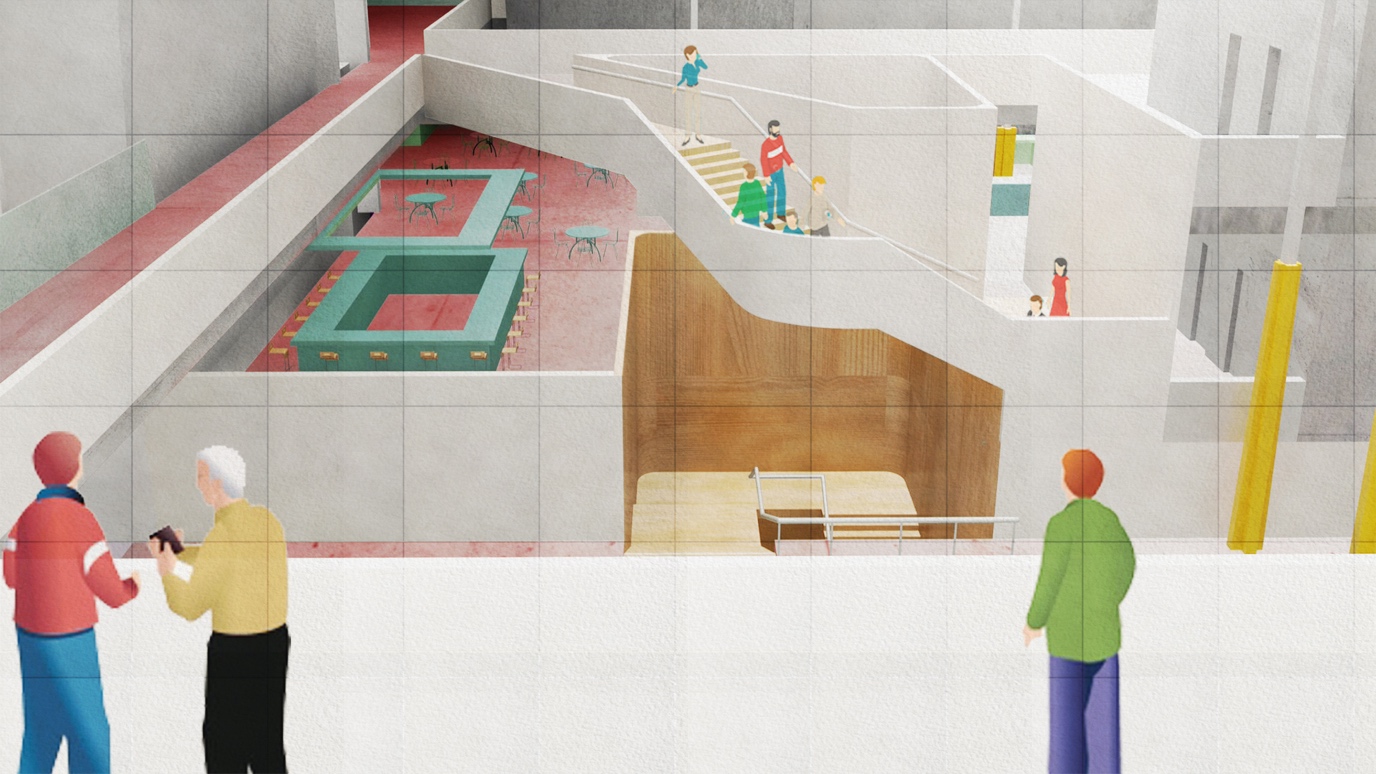Museum of Twentieth Century Art
Martina Rotilio
Mies van der Rohe, Hans Scharoun, James Stirling, August Stueler are all present with their personal way of talking to the city. They gave shape not only to outstanding designs, but also to the ideologies of the times that generated them, amplifying the sense of a loose unity held together by the idea of the collage-city. With a closer look, it’s also possible to identify on site, on historic maps and on old pictures the traces of the pre-war century, left in the shape of a tree, a church, a lost Prussian neighbourhood wiped out by the tabula rasa. The representation of the museum springs from an operation of modern archaeology and critical reconstruction, which reads the traces left on the Kulturforum as ‘objets trouvés’ and builds space around them to sublimate the objects in architectural moments.
The museum finds its essence by telling the story of the ruins of the Cultural Forum, which were once the villas at the edge of the Tiergarten, of the elitist bourgeoisie that fought against the degenerated National Socialism. The church by Stueler reduced to a ruin and rebuilt after the war, is transformed from a weak monument decentred on the tile of the KF to the museum’s beacon. Its walls are extended so to select a volume identical in size and shape to the one of the Neue National Galerie. Against its brick façades, a stretcher bond brickwork is imposed and wraps around the figure plan of the Prussian courtyard: an enclosed intimate place becomes the threshold to the museum that welcomes the art-goers.
